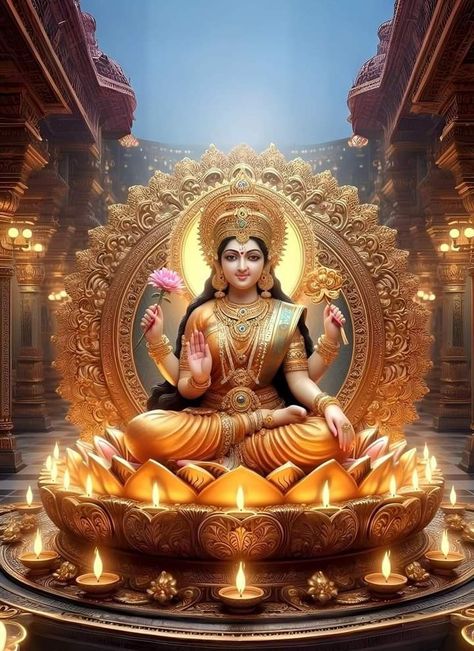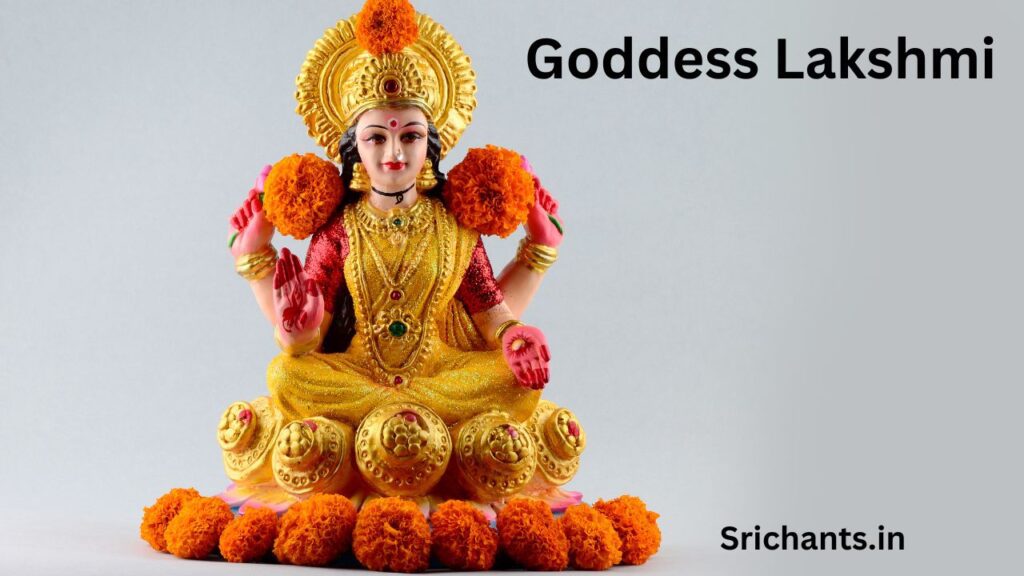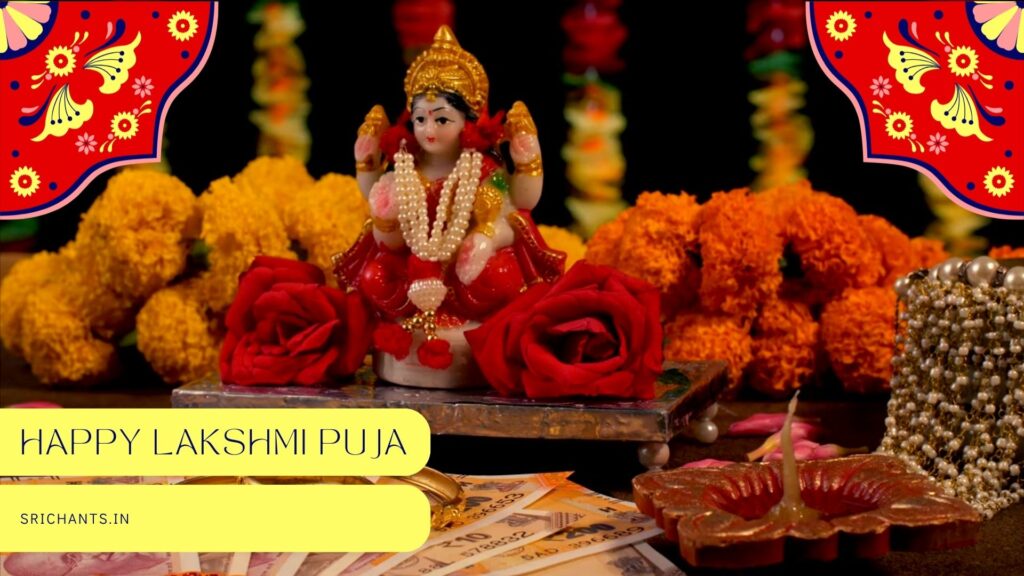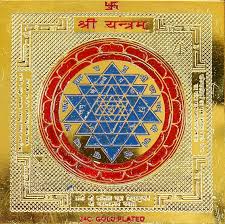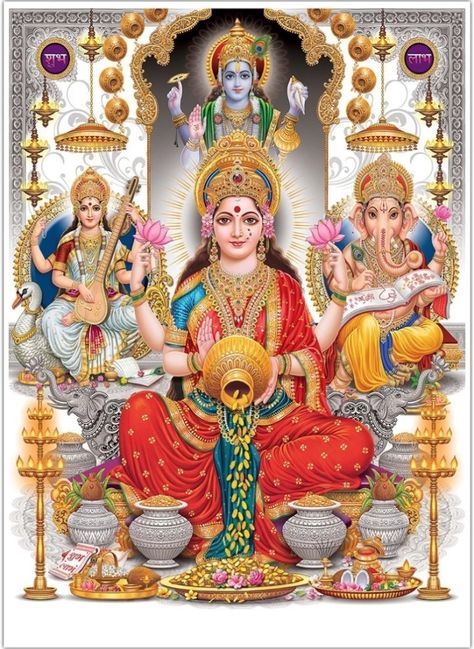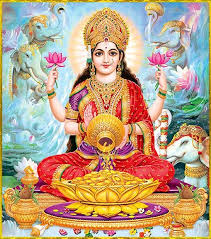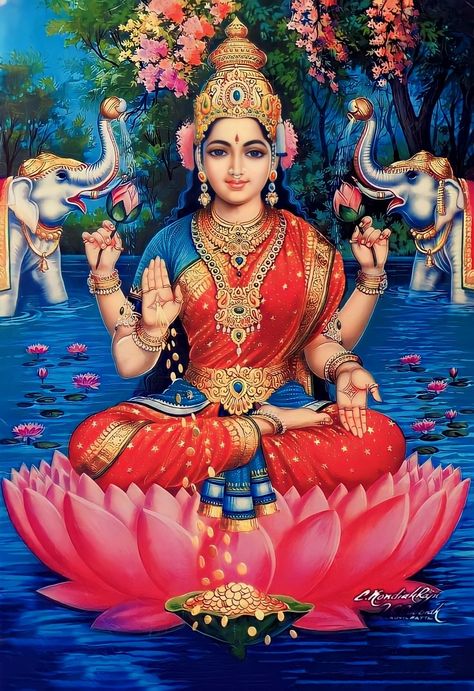Hindu goddess 4 arms : Lakshmi’s Four Arms and Meaning
Introduction
Hindu mythology holds Goddess Lakshmi to be a sacred feminine force of prosperity and plenty. Her rich in symbolic elements iconography acts as a powerful reminder of the four basic goals that guide human existence. Her four arms are crucial to her image; each one represents a different facet of life’s path.
The Embodiment of Life’s Aspirations
Taking her name from the Sanskrit word “Laksya,” which means “aim” or “goal,” Lakshmi personifies the core of ambition and purpose. Her four arms stand symbolically for the four goals that people try to achieve, sometimes referred to as the “Purushartha” or the four life pursuits.
- Dharma – The Path of Righteousness
- Dharma, symbolized by one of Lakshmi’s arms, is the quest of moral and ethical behavior, a life directed by duty and virtue.
- It acts as a reminder that a basis of honesty and devotion to spiritual values leads to real wealth.
- Artha – The Quest for Wealth
- The second arm represents the search of Artha, which includes obtaining material goods and financial success.
- But this quest is a means to an end, to support the other objectives and promote a secure and comfortable living.
- Kama – The Pursuit of Love and Desire
- The third arm stands for Kama, or the search of pleasure, love, and emotional contentment.
- It serves as a reminder to enjoy life’s little pleasures, build deep connections, and discover happiness in the range of human emotions and wants.
- Moksha – The Ultimate Liberation
- The fourth arm represents the pinnacle of Moksha, the breaking of the cycle of birth and death and the achievement of spiritual enlightenment.
- It represents the search of inner tranquilly and self-awareness as well as the transcending of material existence.
When Lakshmi is shown with four arms, each symbolizing one of these goals, the goddess powerfully reminds us of the wholeness of human existence. She exhorts us to establish a harmonic balance between these four pillars, understanding that only when all facets of life are supported and honored can real wealth and fulfillment be attained.
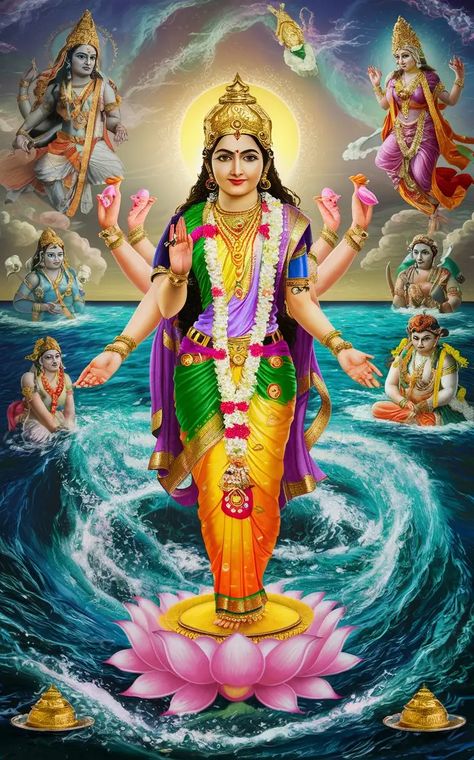
The Multifaceted Goddess of Abundance
The link of Lakshmi with prosperity and wealth goes beyond the earthly world and includes both spiritual and material plenty. Hindu texts from the Vedas to the Puranas include her, underscoring her importance as a representation of the abundant benefits of life.
- The Embodiment of Wealth
- Lakshmi, the goddess of wealth, is honored for her capacity to provide her followers with material plenty and financial stability.
- Her affinities with money, gold, and priceless stones express her wish for wealth and the wherewithal to have a luxurious existence.
- The Source of Spiritual Enrichment
- The lotus blossoms Lakshmi clutches stand in for the quest of spiritual wealth, which transcends material wealth.
- Strong emblem of enlightenment and purity, the lotus serves as a reminder that real wealth includes self-realization and inner development.
- The Bringer of Joy and Beauty
- Lakshmi’s gorgeous figure, decked out in brilliant red sari and superb jewels, epitomises the joy and beauty of life.
- Her presence serves as a reminder to value the visual delights that enhance our lives and uplift our spirits.
- The Embodiment of Fertility and Abundance
- Consort of Lord Vishnu, the Preserver, Lakshmi stands for the universe’s bountiful and fertile character.
- Her connection to the lotus, a fertility symbol, and her representation of elephants, a strength and diligence emblem, support the notion of success attained by diligence and hard effort.
Lakshmi’s four arms, which span both the material and spiritual domains, are a potent reminder that true abundance is a complex idea that goes beyond financial prosperity to include inner tranquilly, beauty, and the development of a life well-lived.
The Reverence and Rituals Surrounding Lakshmi
Hindu culture is steeped in Goddess Lakshmi devotion; many festivals and customs are devoted to recognizing her presence and asking for her blessings. These customs honor her heavenly nature and strengthen the meaning of her four limbs and the activities they stand for symbolically.
- The Festival of Lights: Diwali
- The “Festival of Lights,” Diwali, is the most well-known holiday connected to Lakshmi and is observed with tremendous zeal throughout India and the Hindu diaspora.
- Homes are painstakingly cleaned at this time, and rows of lights are lit to welcome the goddess and her wealth-bestowing graces into the home.
- Lakshmi Puja and Aarti, a light ritual, are carried out as symbols of the quest of both material and spiritual prosperity.
- Navaratri: The Nine Nights of Divine Reverence
- Especially on the fourth, fifth, and sixth nights of the nine-day Navaratri celebration, Lakshmi is revered and remembered.
- This time is set out to ask for her blessings and direction on how to live a happy, healthy life.
- The Lakshmi Mantra: Invoking Her Essence
- A revered method of contacting Lakshmi’s heavenly essence is to say the potent mantra “Shreem Brzee”.
- It is thought that this holy sound vibration carries the essence of the goddess and helps one to realize their dreams and change their wealth-destiny.
- Offerings and Reverence
- On their altars, devotees frequently lay offerings of flowers, money, and lit lamps to show their respect for Lakshmi and their wish to draw her favor.
- The image of wealth and nurturing inside the home is reinforced during festivals when mothers, who are seen as incarnations of the goddess, are especially revered.
By means of these customs and festivals, the symbolic meaning of Lakshmi’s four arms is honored and strengthened, so reminding followers of the need of achieving a balanced existence that includes righteousness, monetary wealth, emotional fulfillment, and spiritual release.
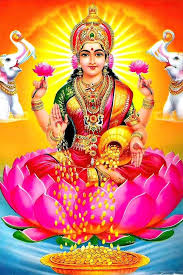
The Enduring Legacy of Lakshmi’s Symbolism
Beyond religious conviction, the meaning of Lakshmi’s four arms has become a potent cultural image that speaks to people all across the world. Her depiction is a timeless reminder of the common human desire for a life that is emotionally satisfying, morally sound, and not just financially successful.
- The Synthesis of Worldly and Spiritual Pursuits
- Lakshmi’s imagery questions the idea that monetary prosperity and spiritual development are incompatible.
- Her four arms represent the peaceful union of these apparently unrelated domains and inspire people to concurrently pursue their spiritual and material goals.
- The Importance of Balance and Moderation
- Lakshmi’s symbolism emphasizes the need of balance and moderation by showing the four life’s interests as equal and interrelated.
- It serves as a reminder that real happiness can only come from a balanced nurturing of all facets of life, free from undue attachment to or dislike of any one activity.
- The Celebration of Femininity and Nurturing
- As a beloved goddess, Lakshmi’s image honors the heavenly feminine and the protective attributes of motherhood.
- Her portrayal as a stunning, glowing woman decked out in brilliant colors and fine jewelry is a potent statement of the strength and beauty that are innate in the feminine spirit.
- The Universal Appeal of Prosperity and Abundance
- Though Lakshmi’s four arms have their roots in Hindu mythology, their meaning speaks to individuals of all cultures and religious traditions.
- Beyond national borders, the desire for material and spiritual wealth relates to the common human experience of pursuing a life of plenty and contentment.
Through her ongoing influence in literature, art, and cultural traditions, Lakshmi’s four arms continue to motivate and direct people toward a life rich in all spheres—righteousness, money, love, and spiritual release. Her symbolism is a timeless reminder of the interdependence of various activities and the need of developing a comprehensive strategy to leading a genuinely successful and happy life.
#lakshmi #4arms #goddessarms #lakshmi4arms #meaning

